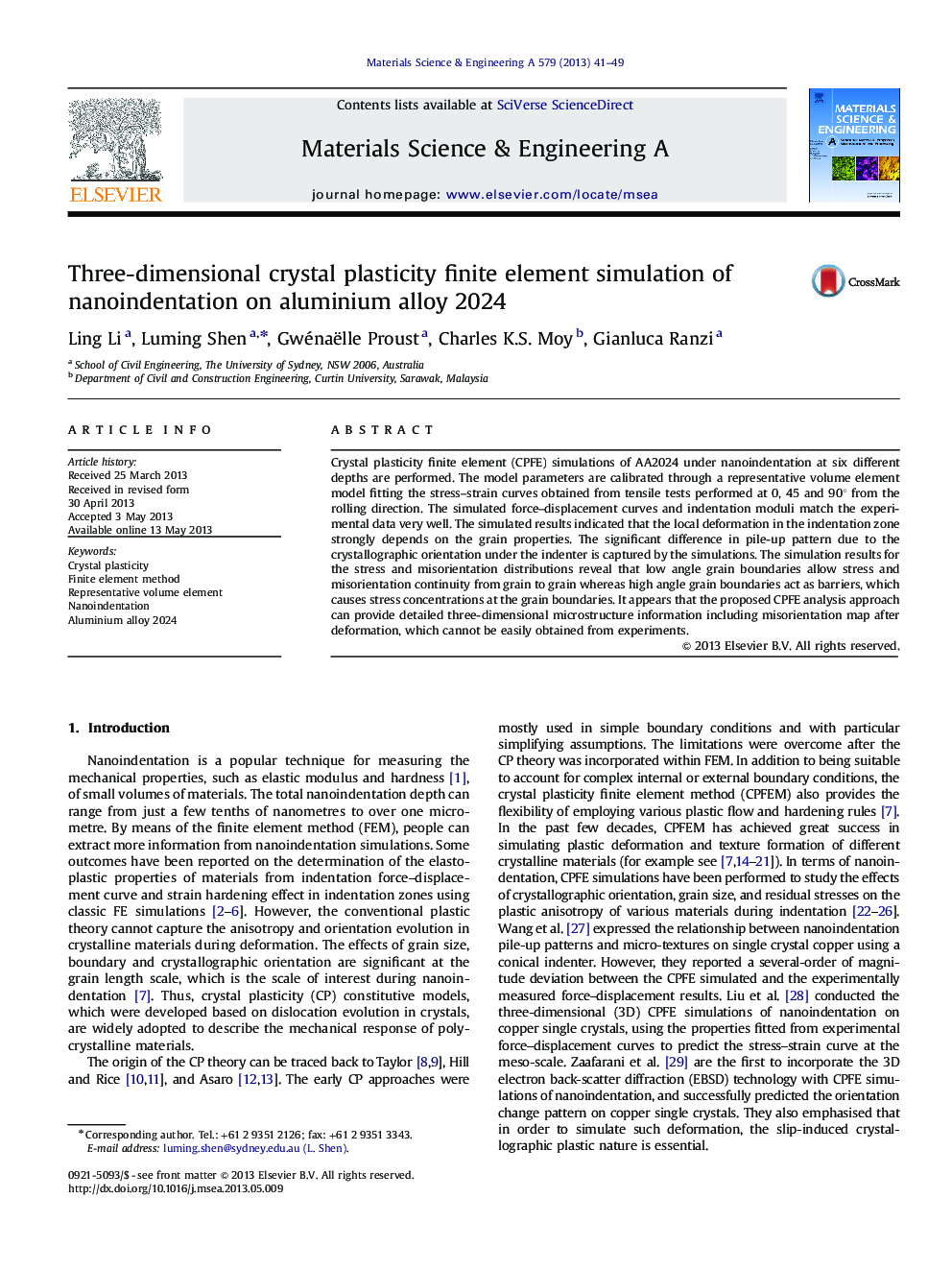| Article ID | Journal | Published Year | Pages | File Type |
|---|---|---|---|---|
| 1576049 | Materials Science and Engineering: A | 2013 | 9 Pages |
Abstract
Crystal plasticity finite element (CPFE) simulations of AA2024 under nanoindentation at six different depths are performed. The model parameters are calibrated through a representative volume element model fitting the stress-strain curves obtained from tensile tests performed at 0, 45 and 90° from the rolling direction. The simulated force-displacement curves and indentation moduli match the experimental data very well. The simulated results indicated that the local deformation in the indentation zone strongly depends on the grain properties. The significant difference in pile-up pattern due to the crystallographic orientation under the indenter is captured by the simulations. The simulation results for the stress and misorientation distributions reveal that low angle grain boundaries allow stress and misorientation continuity from grain to grain whereas high angle grain boundaries act as barriers, which causes stress concentrations at the grain boundaries. It appears that the proposed CPFE analysis approach can provide detailed three-dimensional microstructure information including misorientation map after deformation, which cannot be easily obtained from experiments.
Related Topics
Physical Sciences and Engineering
Materials Science
Materials Science (General)
Authors
Ling Li, Luming Shen, Gwénaëlle Proust, Charles K.S. Moy, Gianluca Ranzi,
